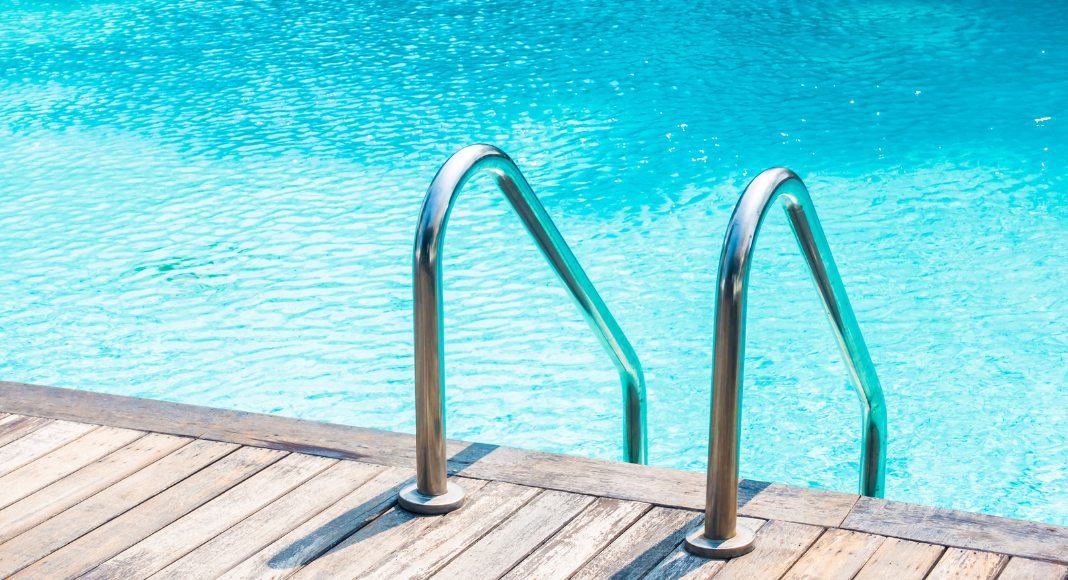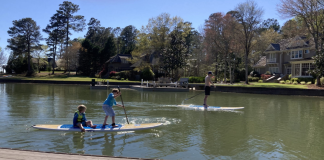 Water safety and drowning prevention is always in the back of our minds as moms whether we want to admit it or not. We’ve all heard heartbreaking stories, yet it’s such a difficult topic and none of us really want to talk about it. But Alicia Webb, M.D., Pediatric Emergency Medicine Physician at Children’s of Alabama and UAB Hospital, talked with Birmingham Mom Collective recently to help empower our readers with specific water safety and drowning prevention tips.
Water safety and drowning prevention is always in the back of our minds as moms whether we want to admit it or not. We’ve all heard heartbreaking stories, yet it’s such a difficult topic and none of us really want to talk about it. But Alicia Webb, M.D., Pediatric Emergency Medicine Physician at Children’s of Alabama and UAB Hospital, talked with Birmingham Mom Collective recently to help empower our readers with specific water safety and drowning prevention tips.

Did you know that drowning is the leading cause of death in children? And that someone can drown in as little as one inch of water? It’s always important for us to be vigilant with our children around water. This means we must be watchful at lake getaways, pool parties, even backyard cookouts with kiddie pools filled with water.
Dr. Webb’s Best Water Safety Tips
Assign a “Designated Water Watcher”
Just like if adults were going to be responsibly drinking, they would have a designated driver, caregivers should assign a “designated water watcher” to keep an eye on kids at all times. At summer get togethers, parents and caregivers can even take turns throughout the event. This way children are always being watched by an adult who’s not pulled away in conversation or grilling duty.
Younger Children / Novice Swimmers
For young children, as well as children who aren’t yet strong swimmers, adults should keep no more than an arm’s length distance away from them in the water at all times.
Older Children / Strong Swimmers
Even if your child has completed swim lessons and passed the swim test at your local pool, it’s still important to keep a close eye on him or her. Dr. Webb says even strong swimmers can drown. Those cases generally have to do with some sort of medical emergency or hitting their head on something while jumping in the water.
Be sure to also teach older children never to go into lakes or streams head first. Many older children get into trouble when they cannot see the bottom of the body of water. Sometimes tree roots, rocks, and shallow water lie just beneath the dark surface.
Boat Safety
Everyone on a boat or out water tubing and water skiing (including adults) should wear proper Coast Guard approved life jackets at all times. Dr. Webb says to check the tag on your children’s flotation devices since many popular floats we strap on our preschoolers and toddlers are not Coast Guard approved. You want to make sure the float is sturdy and doing all you want it to do in an emergency.
Backyard Pool Safety
All the stories I’ve personally heard of children drowning have occurred in a backyard pool–whether at the child’s grandparents’ house, the child’s own house, etc. Dr. Webb has a few recommendations on that to prevent the unthinkable from happening:
- Get a four-sided fence installed around the pool. Many pools only have a three-sided fence around it leaving the area between the house and the pool wide open. Having that fourth side covered can prevent many accidents.
- Make sure the fence has a self-locking latch. The fence becomes useless if the door doesn’t automatically latch closed.
- Install an alarm on the pool fence that will alert you when the fence door opens.
- Consider getting a cover for your pool anytime adults are not directly beside the pool.
Bathtub Safety
Never leave a young child unattended in the bathtub–even to run grab the phone or the front door. Dr. Webb said often those “quick trips” to grab something turn into much longer interruptions than planned, and many children go under the water in that time.
What to Do in the Event of the Unthinkable
If you see someone struggling the water, send a water crook or a floatation device out to the swimmer. Moments of water struggle are often moments of hysteria when no one is thinking straight. So in that decision of “fight or flight,” make sure you don’t jump in yourself, because many are brought down and have drowned as well in those instances. Always send something in that the swimmer can grab onto and be pulled to safety.
If you notice an unresponsive child (or adult), call 911 immediately, then begin on-the-scene CPR right away while you wait for professional help to arrive. Studies have shown that the earlier CPR is started, the better the survival rate.
For those swimmers that were under for a time but came out of the water responsive, keep an eye on them for the next four to six hours. Has the breathing changed, are they not acting like themselves, are they coughing excessively? Then call your doctor or get to the ER–there may be a lung injury that needs to be assessed.
The Myth of “Dry Drowning”
Do any moms out there remember our social media news feeds filled up with links to horror stories a few years ago regarding “dry drowning?” I do, and I was always afraid to read the articles because I knew if I did, I’d never be able to take my kids swimming again! But for those of you that did click the links, Dr. Webb assured me that was falsified information. It turns out, after reviewing the cases, doctors noticed there was much more at play medically in each of these children’s lives. So for the moms out there that need to hear this: dry drowning is not possible!
Knowledge is Power
While this is a heavy topic, we are thankful Dr. Webb gave us these concrete tips we can use to protect our children and people of all ages.
This post was originally published in June 2022.











